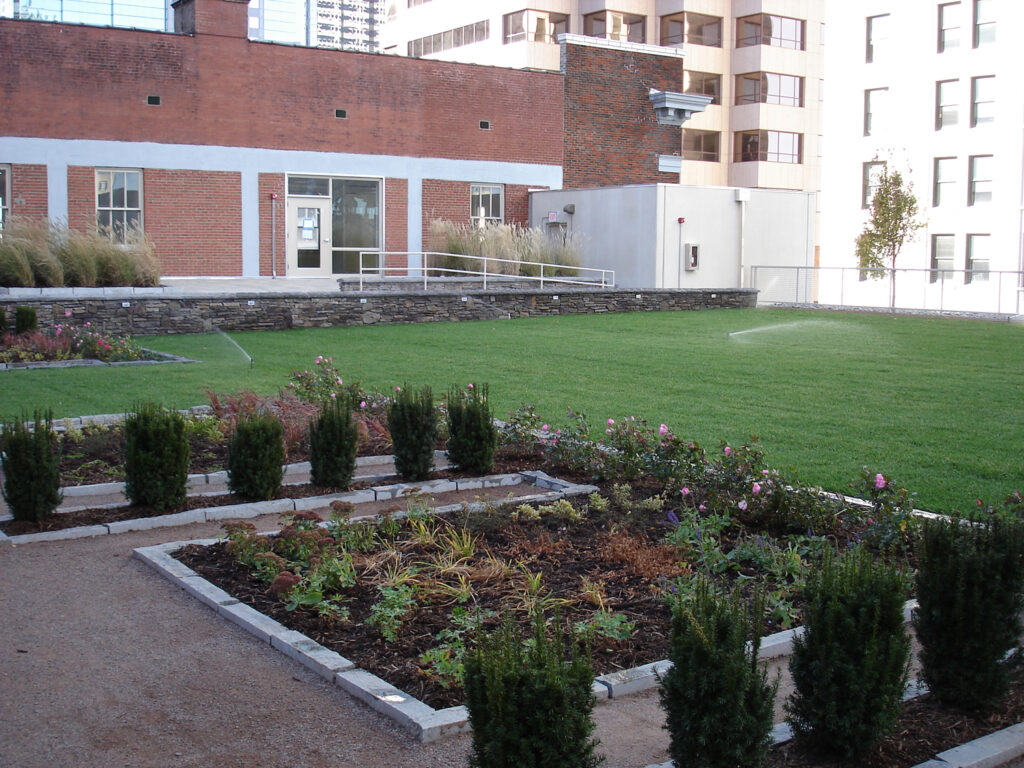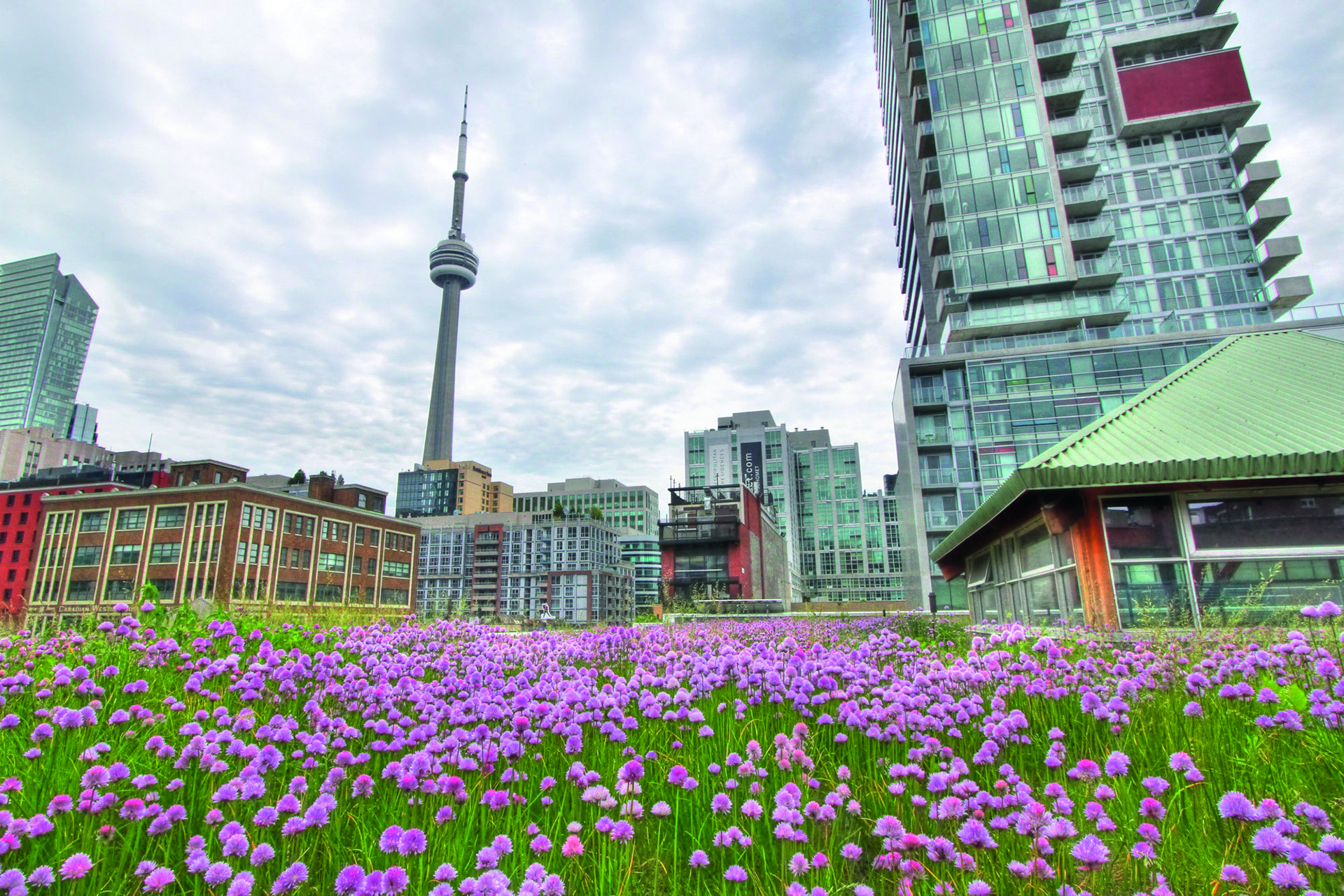20 per cent of the total Green House Gas (GHG) emission in the US is from residential usage of energy- as per a recent study conducted by University of Michigan on 93 million individual households of the United States. Hence it becomes evident that city life has resulted in bringing our carbon footprints to new heights.
Green roof also referred as living or vegetated roof is a roof that is covered with flora planted over a waterproof membrane. It is not only helpful for environment, but it also benefits building owners as well as communities at large.
| BENEFITS TO COMMUNITIES | BENEFITS TO BUILDING OWNERS |
| Reduce air pollution It acts as an additional platform for plantation that absorbs carbon emissions | Optimise use of space Having a terrace garden provides the owners an extra space to leisure |
| Mitigate noise pollution These also have soundproofing capabilities that puts a check on the noise created by certain buildings | Adding on to the aesthetics of the building Plantation adds to the beauty of the building |
| Prevent public health risks Greenery promotes concentration, creativity and learning; hence vegetated roofs hold value if installed to education facilities | Social benefits These act as meeting point for people and showcases owner’s consciousness towards sustainable lifestyle |
| Source of local produce It can also act as a local vegetable garden providing essential produce to the community | Annual energy cost A green home can save up to 25% on their annual energy costs |
| Keeping a check on heat Additional plantation keeps a check on overall temperature | Return on Investment Based on energy efficiency measures Green buildings have a return on investment of 15-20% |
| Improves stormwater Management With water retention properties vegetated roofs help in reduction of flooding | Property value Buildings with green roofs showcase higher average sales prices and increase the life span of the building by up to 2-3 times |
It is true, green roofs were commonly used in historic buildings, not only for the Queen to have an isolated place to leisure but also due to its energy efficiency and sustainability benefits. Hence, green roof is not a new concept- neither in India nor abroad. In today’s time where social isolation is prime, green roofs has gained its importance once again.

A company named Soprema, based out of France and operating in almost 90 countries today, has been manufacturing Green roofs since 1995. It is the company who installed 10,000 square feet green roof to the second floor of the Mountain Equipment Co-op building in Toronto, Canada in the year 1998. The technology used in installation of these has seen numerous advancements, but still it has not become the talk of the town yet.
The biggest reason people are hesitant to opt for green roof is the installation cost. Cost of setting up green roofs in the US is estimated to average between $12 to $15 per square feet, as compared to $8 for installing a traditional residential waterproof roofing. But companies have been working on simplifying the systems with the aim to bring down its overall cost.
“By debunking the myths and putting forward not only the ecological but also financial benefits of green roof, we hope that more and more municipalities will include them into their various building codes.”; iterates Roxanne Miller, Landscape Architect AAPQ CSLA, SOPREMA Canada.
Canada has been quite active in recognising the need of strengthening energy efficiency. One such step in this direction is the recent investment of $3 million by Government of Canada in Alberta’s construction industry. The principle idea of this investment is promoting different firms to develop innovative green technologies.

In countries like US and Canada, cold weather is another factor that acts as a stumbling block as the plants go dormant due to low temperatures. As per Miller, “Green roof, apart from being a means of mitigation of urban environmental problems and crisis in plants growing seasons (storm water mitigation, urban heat island effect reduction, increasing biodiversity, etc.) is also a way to protect the waterproofing that is underneath. It is part of the building envelope sustainability strategy and does not lose that value once the plants go dormant.”
No doubts, COVID-19 has put everything on hold. But it is time to use this to our benefit and plan on how we can give back to our mother nature. Installation of green roof is one such tool that can prove our consciousness towards our carbon footprints.
Hence, it is time to turn our home or commercial building into a green building and make a positive change to the aerial view of the cities- from the face of asphalt and concrete to the pristine colour of green.
Written by: Mansi Aggarwal Kwatra

About the Author: Passionate for the environment, Mansi who resides in Canada is a writer, environmental photographer and a voice-over artist.

